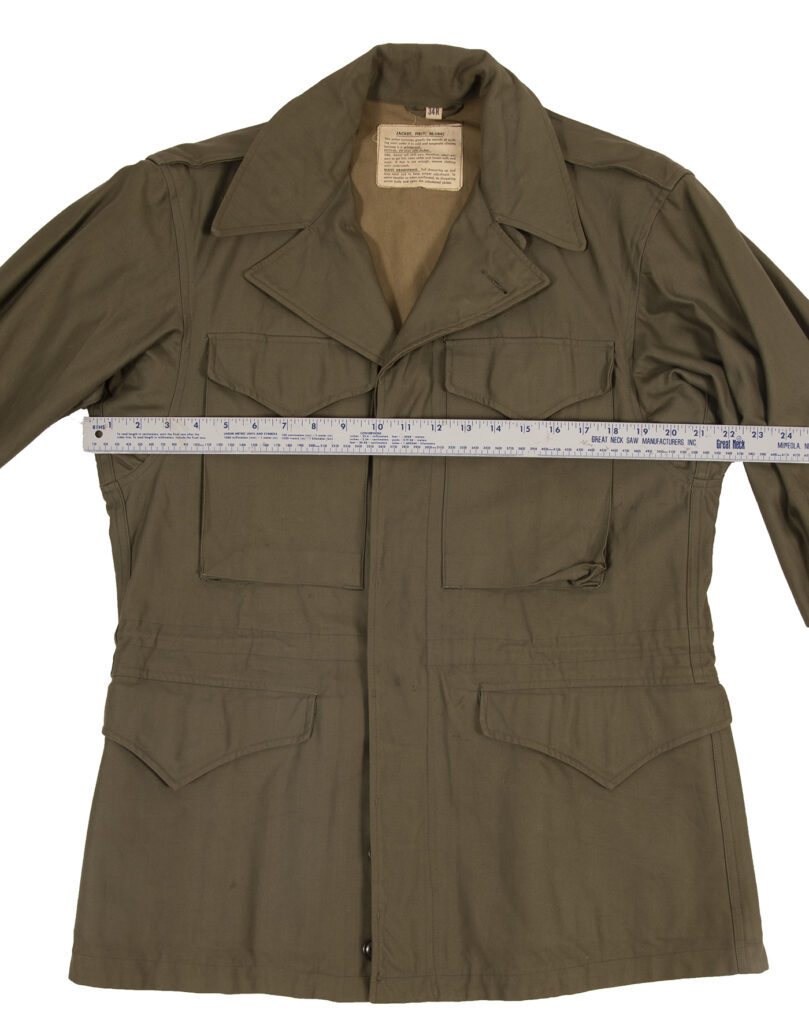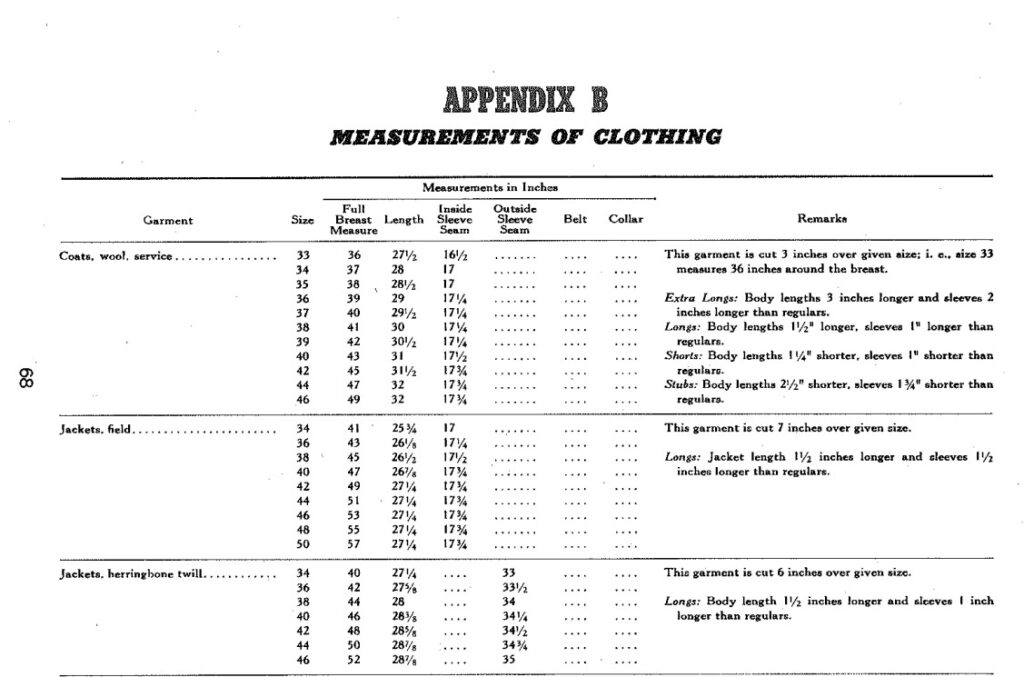XXL WWII Field Jacket! RARE!!! Measures 50″!!!
One can look online, especially ebay, at any given time and find one or more vintage jackets listed with the actual chest measure advertised as the “size” by select sellers.
I’m sure they’re not hoping to snag some unsuspecting person who will pay a premium price for what is actually a much smaller garment, who will be too embarrassed to return it- that is, if they even allow returns. Such mistakes are most certainly completely innocent…
Why do such listings annoy the hell out of me? Because the measure of the chest does not equal the size of the chest. It’s not even close. This is due to the fact that all shirts, jackets and coats are oversized to allow freedom of movement. If you put on a jacket that measures the same as your chest, you’ll find yourself in a straight jacket.
In order to determine the size of a coat or jacket with missing or illegible size markings, the first step is to determine the chest measure. This is very simple; zip or button the front of the garment, lay it flat, then measure the distance from armpit to armpit. Double this number and one will have the circumference of the chest. Then subtract the amount of ease for that style of coat or jacket.
“Ease” is the amount of extra room built in to garments, typically tops, to allow freedom of movement. Most cold weather coats and jackets have 6-10 inches of ease. Thus, their chests will measure that much more than the stated size. In the US military documents they state that “garment is cut X inches over the garment size.” For simplicity, I simply say “+X inches”.
For example, M41 Jackets have 7 inches of ease so a size 34 will measure 41″. Thus an M41 with a chest of 51″ is clearly not an XXL. It’s a 44. Original shown below:

An actual 44R (shown) measures 51″.

Original M43 Field Jacket, 370D, size 34R. Chest measure is 44 inches.
Later production M43 Jackets, HBT Jackets or Raincoats will be +10″ since they’re intended to be worn over other jackets or liners. Therefore, those will get by on someone who typically requires a jacket 1-2 sizes larger if they only wear a shirt underneath. So a 2nd pattern size 36 HBT jacket will usually work on people who wear 38 or 40…but it’s not going to fly on a guy who needs a 44 much less a 48.
Conversely, a few tops have notably less ease- Service Coats, M42 Jump Jackets and German Feldblusen run 3-4 inches over the marked size. US overcoats oddly are only +5″.
So, when you see a coat or jacket being pimped with the chest measurement being represented as it’s actual size, don’t fall for it. It’s false advertising at its finest.

TM 10-265: Click on the photo for a link to a pdf of the appendix from TM 10-265 on how to determine the sizes of garments without legible markings. This is from the QMC manual on salvaging clothing.
This was written by the US Army and it’s likely to conflict with the information one finds from select militaria dealers. I know which one I consider valid.
Note: The HBT jackets in TM are the 1st pattern. 2nd pattern jackets are +10″.
Shrinkage, wear and tear, etc: Most shrinkage is in length rather than circumference. Heavily worn uniforms may lose an inch or so in the chest or waist, so one can compensate for that when trying to size such a garment. Using the tables in the TM should get you to the garments original size- at worst maybe one size off.
German WWII Uniforms: These follow the same principle. Feldblusen (Tunics) were +10cm (about 4 inches) over the marked size. Thus, a tunic with a chest measure of 102cm is a size 92 and so forth. Greatcoats appear to have had the same amount of ease.
Most German insulated coats, parkas, smocks and jackets used a generic number system- 1, 2, 3, or sometimes 4, rather than the size in centimeters. Trousers, like the US ones, were true to size, meaning a waist size of 86 should measure 86cm.
